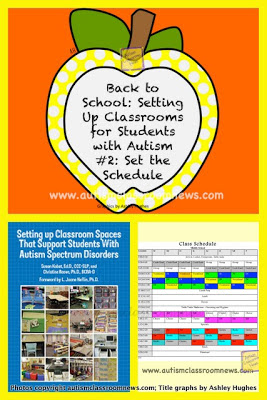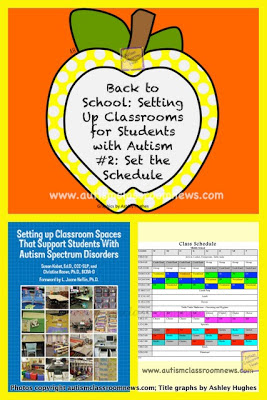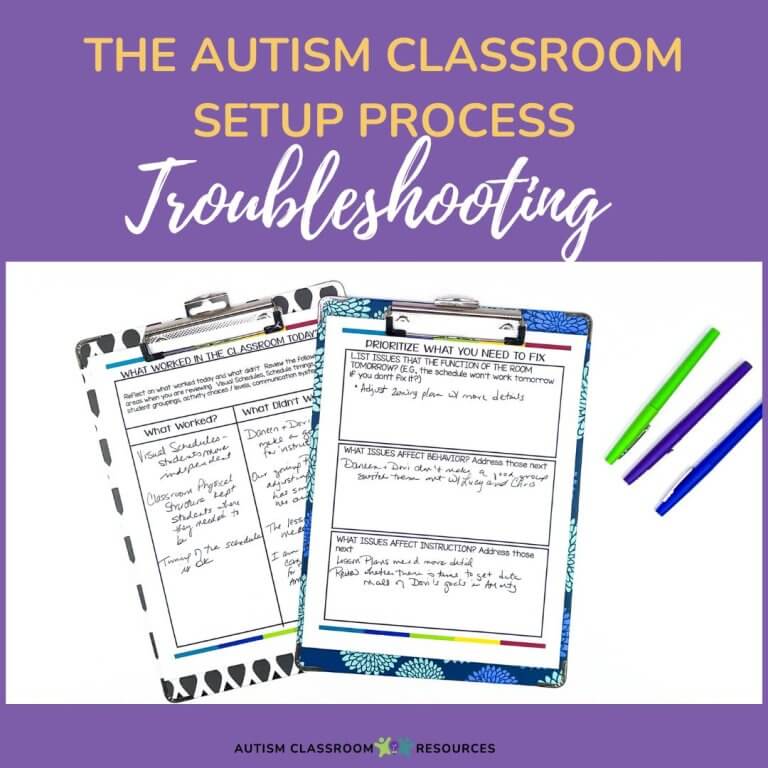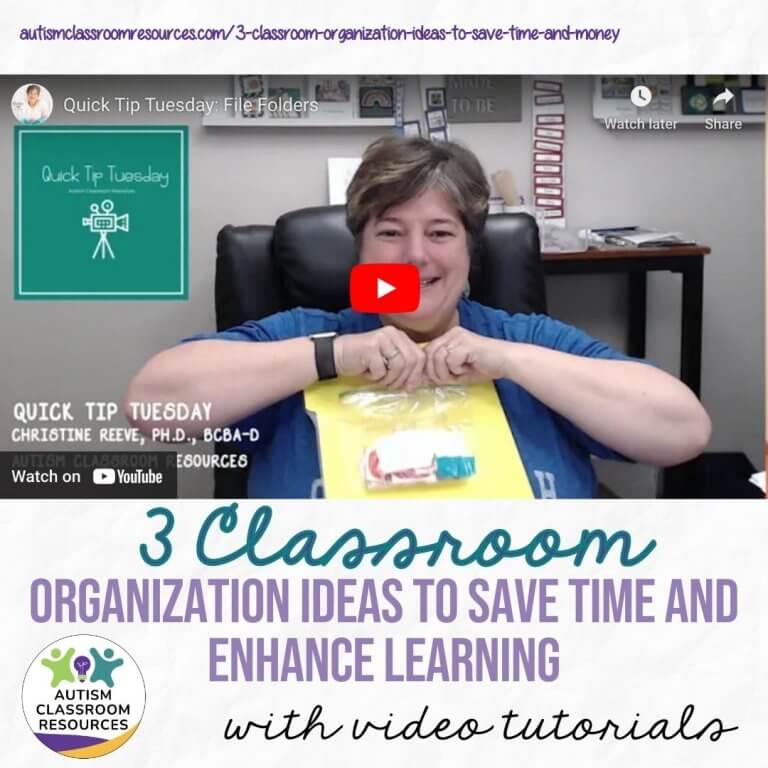Sharing is caring!
As we work through the series on setting up classrooms for students with autism, our next step is setting up schedules. In the first step, I talked about getting to know your students. Once you know what the students need, you can start thinking about a schedule to meet those needs.
When I schedule in a resource / self-contained room, I really like to use small group rotations that include the explicit instruction, independent work, and small group times based on the age of the students (e.g., cooking, art, vocational skills). Essentially here are the 5 steps of setting up the schedule (I really didn’t set this up to be 5 but it does make me happy to have it be even!).
For earlier posts in this series, click here.
1. Selecting Activities:
What types of activities meet the needs of your students? What activities are chronologically appropriate while developmentally appropriate? For instance, you wouldn’t want a high school student to have play time in the schedule. Similarly, you wouldn’t want a preschooler to have vocational job training on the schedule.
2. Allocating Time.
How much time can the students in the classroom maintain behavior in different situations? If this isn’t consistent, think about having some students staying in a group longer than others and schedule other activities (like structured work system time or more direct instruction) for those who can’t maintain themselves in the group for the full time. As you run the schedule, if you start to lose the attention of the students in the activity, make it shorter in the future schedule.
3. Grouping Students.
Oh, someday I will tell you some of the funniest stories of students I have put together in groups and then regretted it. That’s a whole other post. However, think carefully about how groups should be established. Do you want more independent students with less independent ones or does that cause one student to monopolize instruction? Do you have social skills needs that you should group for?
4. Sequence of activities.
Do you have a student (or 5) who need things carefully orchestrated to keep their behavior regulated? Yea, we all do. So, schedule that student’s activities first. Think about alternating hard and easy activities. Think about alternating individual and group activities. And think about ordering activities in terms of the teacher “in his face” giving instruction and time on his own to work independently.
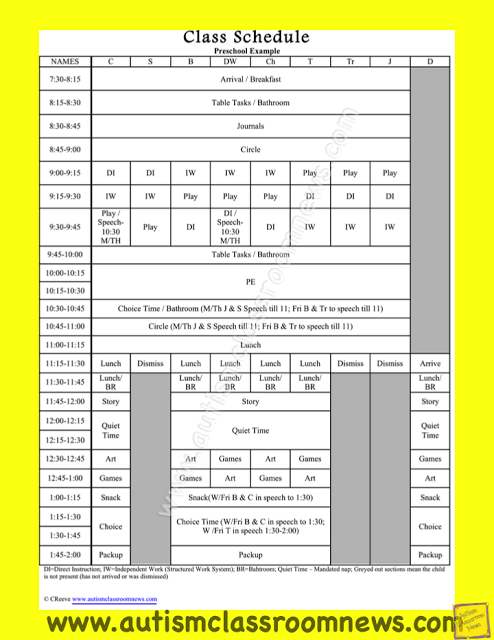 5. Construct the schedule.
5. Construct the schedule.
In deciding what goes into the schedule, think about how much group time vs. how much individual instruction each student needs. Also determine if there are set times that students will be out of the classroom. I start with a grid like the one to the right that lists the students across the top and the times, in 15 or 10-minute increments on the left side. Block off the times that are not changeable like lunch, recess, art/music etc. These are times that will have to occur at a specific time.
After the nonnegotiables are in the grid, schedule the most complex student(s) first. This is the student who needs events set up in a special order to be successful. For instance, I often will schedule centers for that student to begin with direct instruction (explicit instruction 1-1 or in small group) followed by a structured work system / independent work time and then a small group activity. This allows him to have a series of intense instruction, followed by a break of people telling him what to do, and then a more social situation. The schedule the other students around that student.
In the next few posts, I will share some schedules with you for different ages that might give you some ideas. Until then, what questions do you have about creating the schedule? I will be at autism family camp this week but will try to keep an eye out for comments and suggestions and address them or will definitely address them when I get back. For more ideas and examples of rooms and schedules, check out our book (Click the book to see it on Amazon. This is an affiliate link. I wrote the book so I support it, but it just gives me a small commission. Your price stays the same. See my disclosure for more information.)
Until next time,

